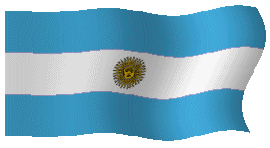
B"H
Jewish  Tours
Tours
 Buenos Aires, Argentina
Buenos Aires, Argentina

|
What is Travelers’ Choice?
Tripadvisor gives a Travelers’ Choice award to accommodations,
attractions and restaurants that consistently earn great reviews
from travelers and are ranked within the top 10% of properties
on Tripadvisor.
¿Qué es el premio Travellers' Choice?
Tripadvisor les otorga el premio Travellers' Choice a los
alojamientos, las atracciones y los restaurantes que
consistentemente reciben excelentes opiniones de los
viajeros y que se clasifican dentro del 10% de los
establecimientos más populares en Tripadvisor.
|
"When a knock on the door meant terror."
By WALTER
BINGHAM
OCTOBER 28, 2020 09:24
All over the Western world Jews are
experiencing a resurgence of antisemitism. Synagogue doors are being reinforced;
Jewish businesses are being attacked; Jewish monuments have been defaced; people
are careful not to wear anything that can identify them as Jews, and those who
do are in danger of verbal or even physical attacks. It happens now
predominantly in European cities, as well as in Jewish areas in the United
States.
Members of Antifa, the supposedly anti-fascist organization, have
been known to support the anti-Israel Boycott, Divestment and Sanctions
movement. And in Germany, where antisemitism was suppressed after the defeat of
Nazi regime, it is again unashamedly raising its ugly head.
In a few days
Jews all over the world will be commemorating the 82nd anniversary of
Kristallnacht, “The Night of Broken Glass,” named after the shattered windows of
Jewish businesses and homes during the night from November 9-10, 1938. That
night, most synagogues throughout Germany, Austria and the annexed
Czechoslovakian Sudetenland were plundered and set alight. Thousands of Jewish
businesses were damaged and 30,000 Jewish men were sent to concentration camps.
It was the most horrendous anti-Jewish pogrom in Germany prior to the policy of
extermination that was formulated On January 20, 1942, when 15 high-ranking Nazi
Party and German government officials gathered at a villa in the Berlin suburb
of Wannsee to discuss and coordinate the implementation of what they called the
“Final Solution of the Jewish Question.” Among them were SS General Reinhard
Heydrich, the chief of the Reich Security Office and one of SS chief Heinrich
Himmler’s top deputies; SS Maj.-Gen. Heinrich Müller, chief of the Gestapo; and
SS Lt.-Col. Adolf Eichmann, chief of the Department for Jewish affairs.
The
trigger for the atrocities of Kristallnacht can be found in March 1938,
following the annexation of Austria into the German Reich.
The Polish
authorities were concerned about the increased persecution of Jews in those
countries. But it was not their welfare in which they were interested; their
fear was that the many Polish nationals among the Jews would either want to
return to Poland or be forced to do so. So, early in October, the Polish
government issued a denationalization law that annulled the citizenship of Poles
living abroad for more than five years, unless before the end of the month they
received a special stamp in their passports from the Polish consulates. Not
surprisingly, Jews were refused this facility.
German policy at the time was
not yet mass extermination, but rather to get Jews out of Germany. When the Nazi
regime learned that Polish officials would not stamp the passports of Jews, thus
making all of them stateless without passports so that they would have to remain
in Germany, SS chief Himmler ordered that all Polish Jews be immediately and
forcefully deported to Poland.
It was during the small hours of October 28
that the Polish Jews had to respond to the dreaded knock on the door that
spelled terror. Almost 20,000 Jewish men women and children were arrested,
permitted to hurriedly pack just one suitcase, and with an allowance of just 10
marks, transported to the Polish border in sealed trains. When the Poles became
aware of this, they closed the border. “No Jews” was the order.
With Polish
bayonets facing them and German machine guns behind them, these Jews were
stranded helplessly in no man’s land. The Jewish welfare organization ORT was
allowed to hastily erect some shelter, while the Poles and Germans argued for
two or three days. The circumstances were grim and food was short. Eventually
the Poles were forced to accept this increasingly dejected, hungry and tired
mass.
THE LARGEST number were held in Zbaszyn, a Polish border town. My own
father was among them. For months they slept in poorly constructed sheds and
stables, with very few provisions. The severity of the conditions were witnessed
by Polish historian Emanuel Ringelblum, who described the hopelessness of the
deportees in a letter to a colleague: “I do not think any Jewish community has
ever experienced so cruel and merciless an expulsion as this one. The future is
envisaged in desperate terms. Jews have been humiliated to the level of lepers,
to fourth-lass citizens, and as a result we are all affected by this terrible
tragedy.”
Some months later they were transported to the Warsaw Ghetto.
At
that time, I was in a Jewish school in the city of Mannheim, some 70 km. north
of my home in Karlsruhe. Had I been there, I too would have suffered the same
fate. The categories of arrest were determined by the local Nazi chief, so my
mother was spared on that day. Fortunately, she survived the concentration camps
and could relate the events to me. She told me she was asked where I was, but
said I had gone out and she did not know where I was.
Among those deported
was the Grynspan family from Hanover. Their 17-year-old son, Hershel, was living
illegally in Paris. His sister, Berta, was able to send to him a postcard from
Zbaszyn, which detailed the cruelty and tragedy of the family’s forced
relocation. Enraged and distressed by the plight of his family and the thousands
of other Polish Jews, Hershel Grynszpan went to the German Embassy in Paris
asking to see the ambassador. He was taken to Third Secretary Ernst vom Rath,
and as he faced him, Hershel drew a pistol and shot him. Vom Rath died of his
wounds on November 7.
That was the trigger for the “spontaneous” events of
Kristallnacht two days later.
It is documented that plans for this outrageous
crime had already been laid by Himmler in great detail and communicated to all
Nazi offices in the country, and that he only waited for a suitable occasion to
implement it.
On that fateful Thursday morning, even before I arrived at
school, which was on the premises of a synagogue, smoke hung in the air and
there was more activity than usual in the streets. Then I saw it all. The fire
service was in attendance, not to douse the flames that engulfed the synagogue,
but to cool and protect neighboring German property from being damaged.
On
that same day I left Mannheim to return to my home. The day is so vividly etched
in my memory that I remember distinctly that I took the 3.22 diesel train. Ask
me what I had for lunch yesterday and I would have difficulty remembering.
One other fact is worth mentioning. After the synagogue fires in my hometown,
some remaining walls of one of the synagogues constituted a danger to the
public, and to add insult to injury, the Jewish community was “asked” to pay for
the demolition.
When Hershel Grynspan was arrested by French police he
protested: “Being a Jew is not a crime; I am not a dog; I have a right to exist
on this earth; wherever I have been I was hounded like an animal.”
There are
conflicting reports about his fate, but it can be safely assumed that he did not
survive the war. Let us never forget the brave Hershel Grynspan and the events
that befell our people.
The writer, who is approaching his 97th birthday, is
a senior journalist and broadcaster. His weekly broadcasts can be heard on
Israel National Radio (Arutz 7) and Israel Newstalk Radio, and on 88 fm in
Melbourne, Australia (all in English).
https://www.jpost.com/opinion/82-years-after-the-kristallnacht-and-antisemitism-is-rising-647023
|
Visite nuestro sitio/Visit our home page: |